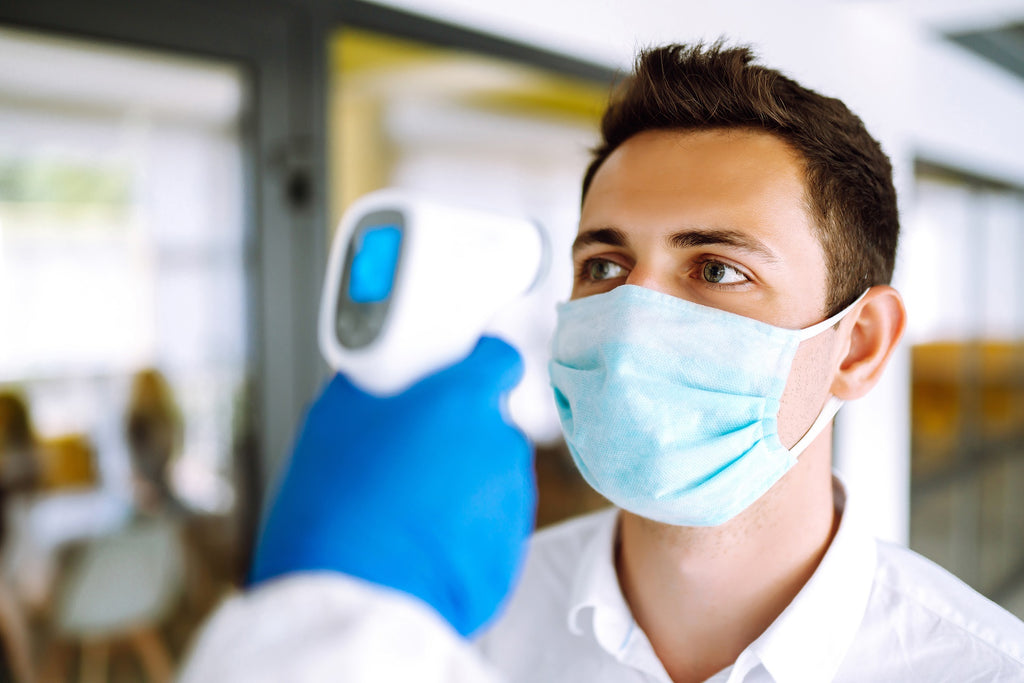Written By Brooke Chaplan / Reviewed By Ray Spotts
Medical professionals are tasked with checking and maintaining the well-being of their patients on every level, from physical well-being to mental wellness. In order to fulfill this role, it’s important that doctors, nurses, and other medical practitioners understand how to spot the earliest signs of illness in their patients.
By asking the right questions and paying attention to patients’ responses, one can determine if a patient is sick or not. Read on to learn four tips for identifying illnesses.
1. Listen for Sneezing
It’s possible to spot a cold by monitoring symptoms like coughing or sneezing, but these symptoms are so common they are often overlooked. Sudden or constant sneezing with no warning may be an indication that an individual has caught a cold or fever.
Pay attention to sound, force, and how quickly a sneeze happens to determine whether immediate treatment is needed.
Healthy sneezes make a distinctive noise with moderate force and last about six-tenths of a second. Sneezes outside this range often indicate an infection or another problem that needs attention quickly.
2. Be Aware of Coughing
A cough could be a harmless clearing of one’s throat or it may be a sign of more serious problems, such as pneumonia. Although it’s hard to tell if someone has a cold or some other contagious illness with just a cough, individuals dealing with illnesses like bronchitis will have noticeably problematic coughs.
For example, a cough paired with a sore throat and phlegm is a cause for alarm.
3. Use a Temperature Scanner
Another effective way to determine if someone is sick is to use a temperature scanner. With COVID and its variants still prevalent, installing a temperature scanning kiosk is a helpful way to spot sickness quickly. This way, anyone with higher temperatures that may potentially be sick can seek treatment immediately.
Performing temperature checks near your building’s entrance can help you determine which guests may be sick.
4. Check the Eyes
The eyes are the window to an individual’s overall health. Medical practitioners should watch out for signs like redness, inflammation, and excess tears. These symptoms can indicate an infection or illness that should be addressed by a professional.
Additionally, it’s important to pay attention to how a patient responds to light. Any squinting or unevenness in pupil size can be warning signs that something is off with a patient’s health.
While sickness isn’t always preventable, it’s important to know when it’s time to take action and administer treatment. Keep these four tips for spotting signs of sickness in mind to make sure patients receive the treatment they need as soon as possible.
Subscribe to our Trusted Health Club newsletter for more information about natural living tips, natural health, oral care, skincare, body care and foot care. If you are looking for more health resources check out the Trusted Health Resources list.
Written By:
Brooke Chaplan is a freelance writer and blogger. She lives and works out of her home in Los Lunas, New Mexico. She loves the outdoors and spends most of her time hiking, biking, and gardening. For more information, contact Brooke via Facebook at facebook.com/brooke.chaplan or Twitter @BrookeChaplan
Reviewed By:
Founder Ray Spotts has a passion for all things natural and has made a life study of nature as it relates to health and well-being. Ray became a forerunner bringing products to market that are extraordinarily effective and free from potentially harmful chemicals and additives. For this reason Ray formed Trusted Health Products, a company you can trust for clean, effective, and healthy products. Ray is an organic gardener, likes fishing, hiking, and teaching and mentoring people to start new businesses. You can get his book for free, “How To Succeed In Business Based On God’s Word,” at www.rayspotts.com.




